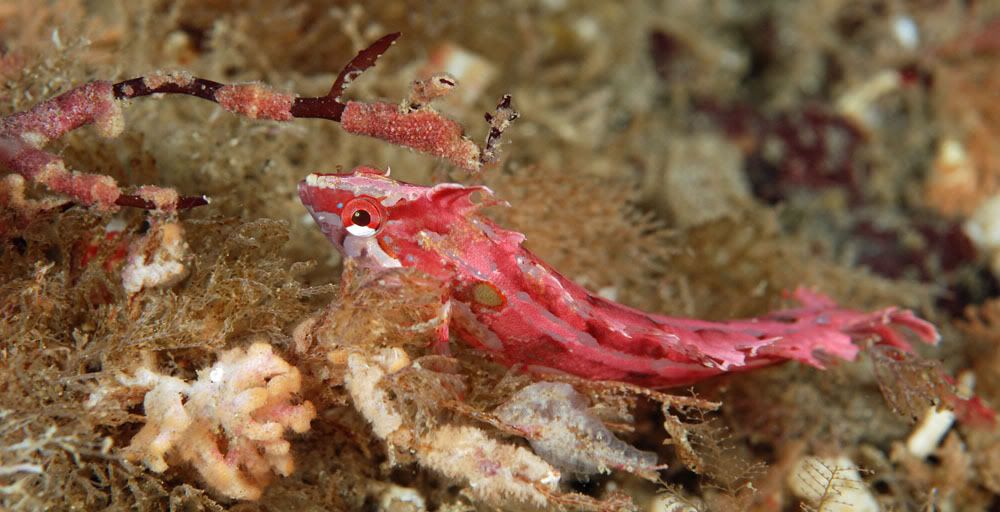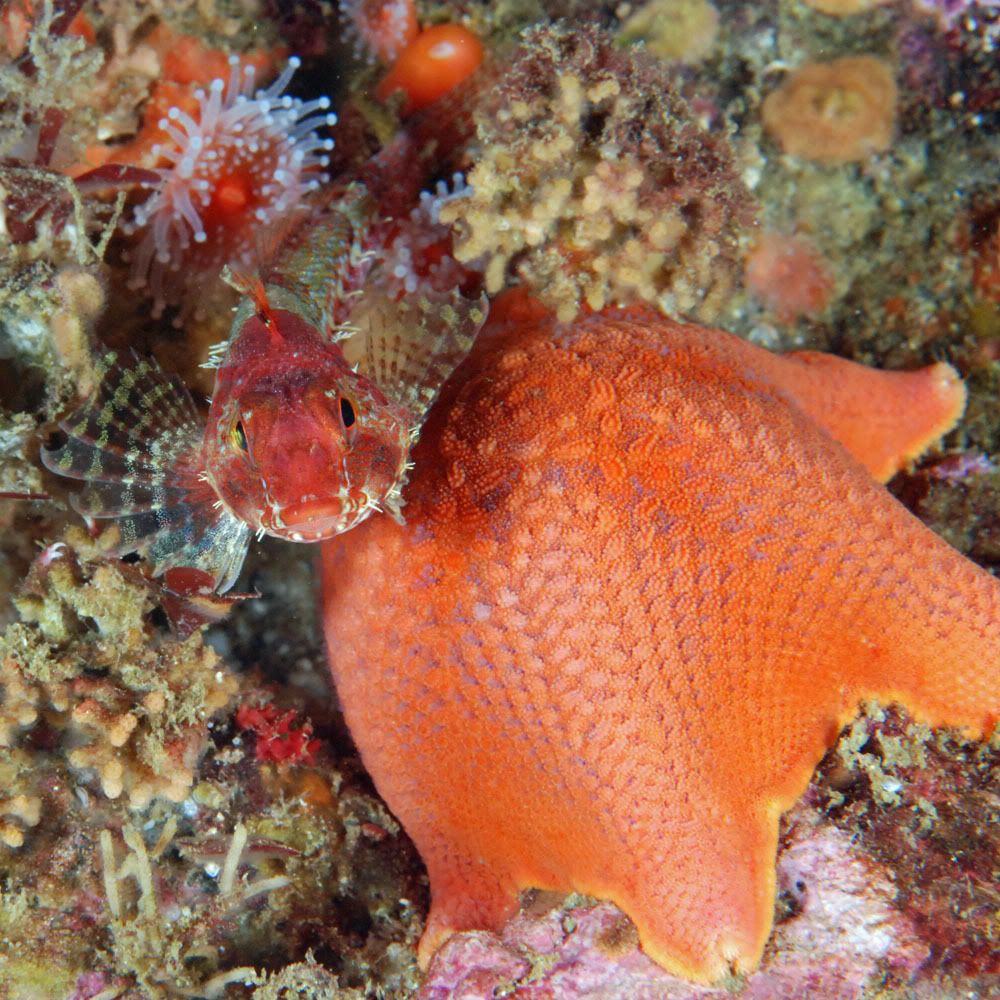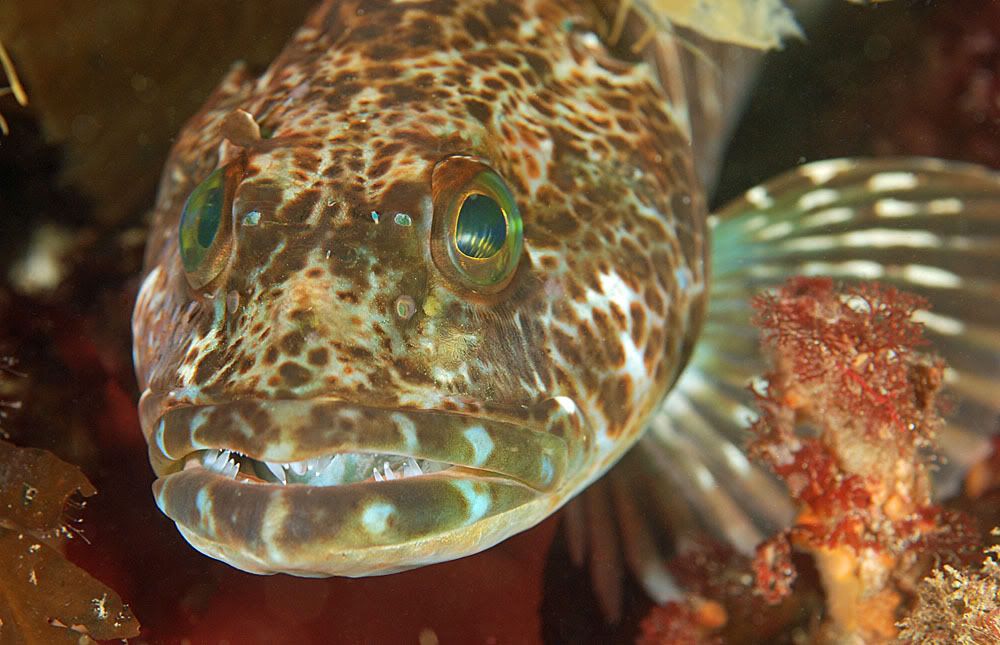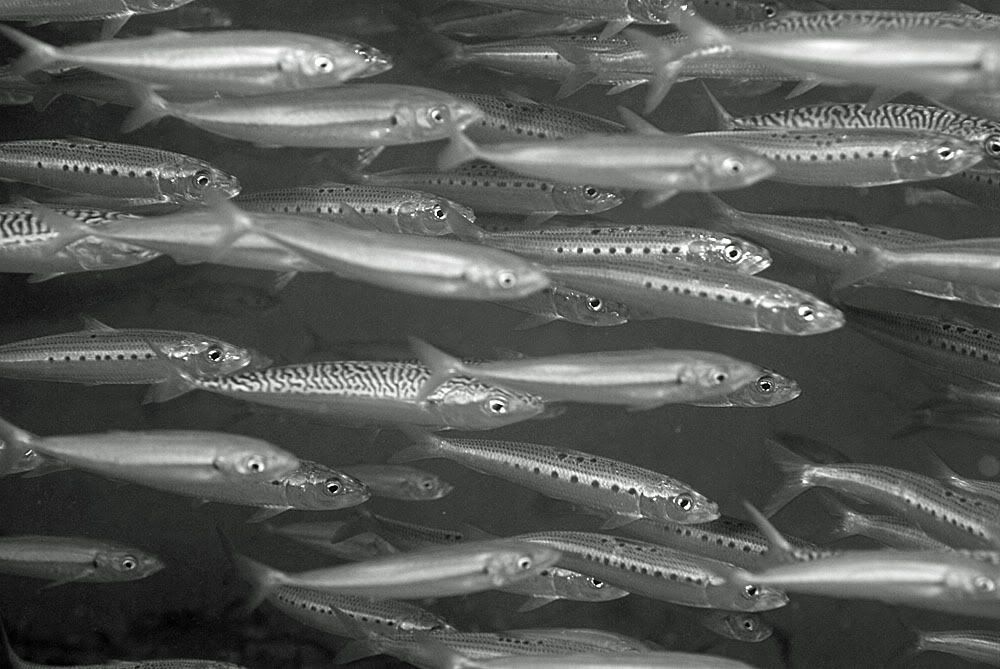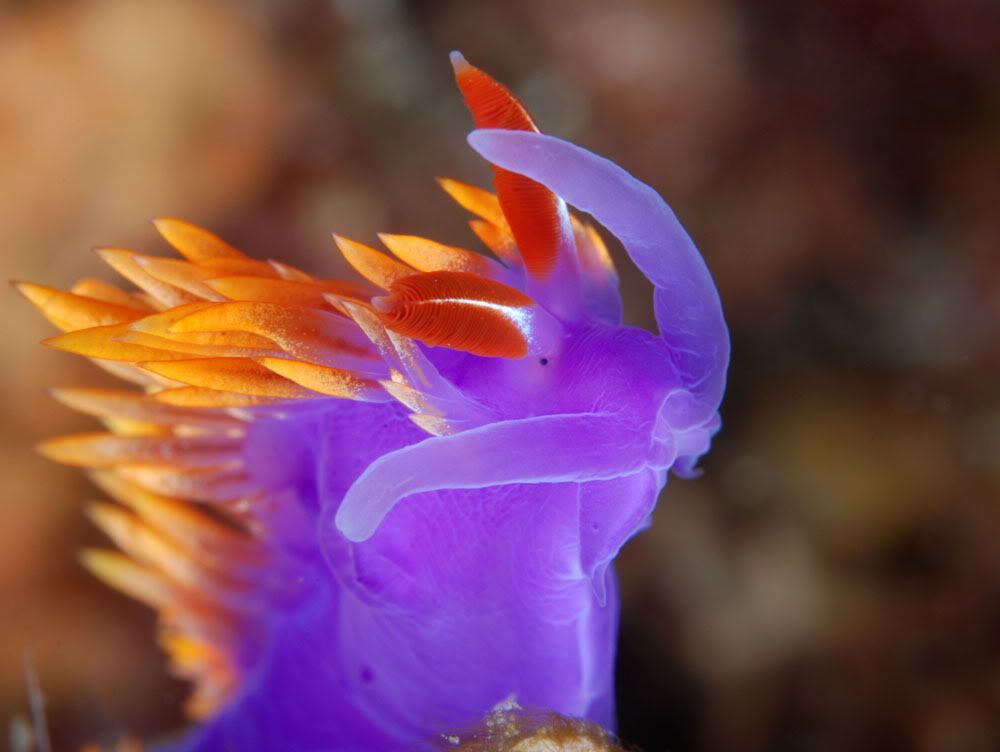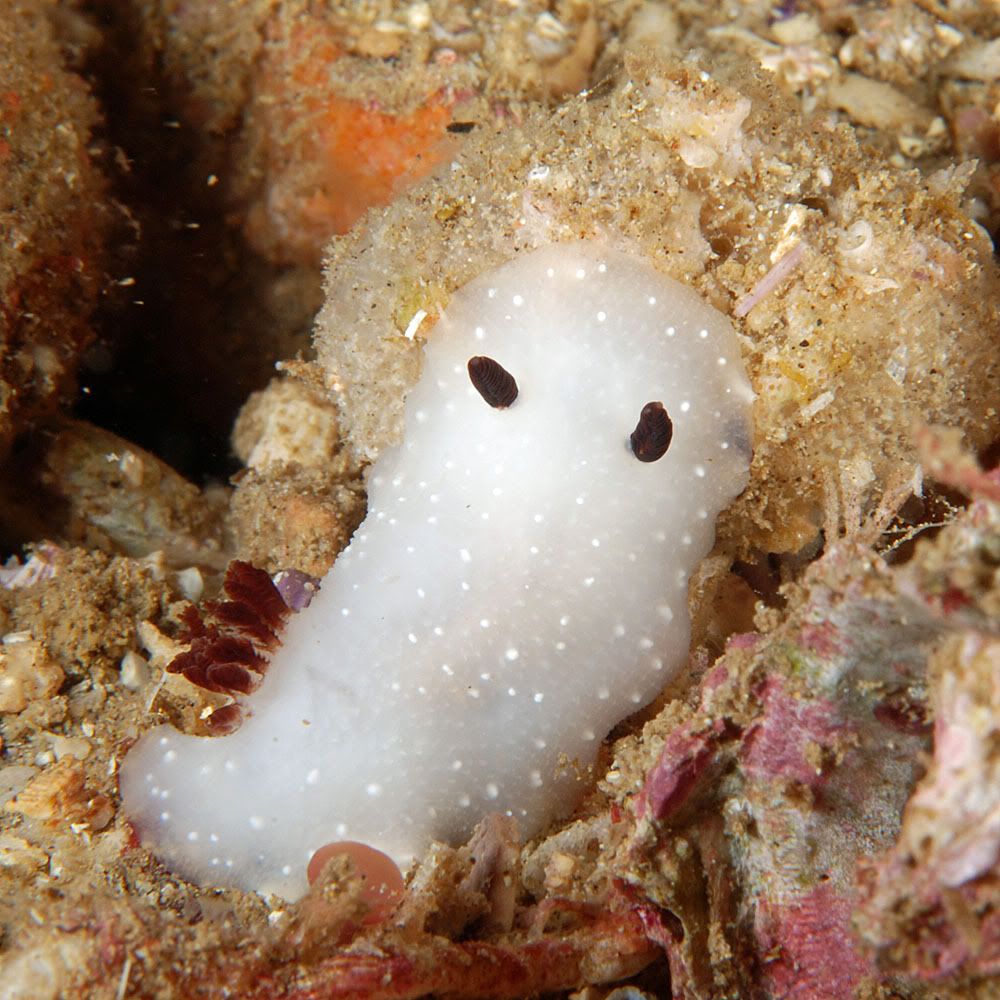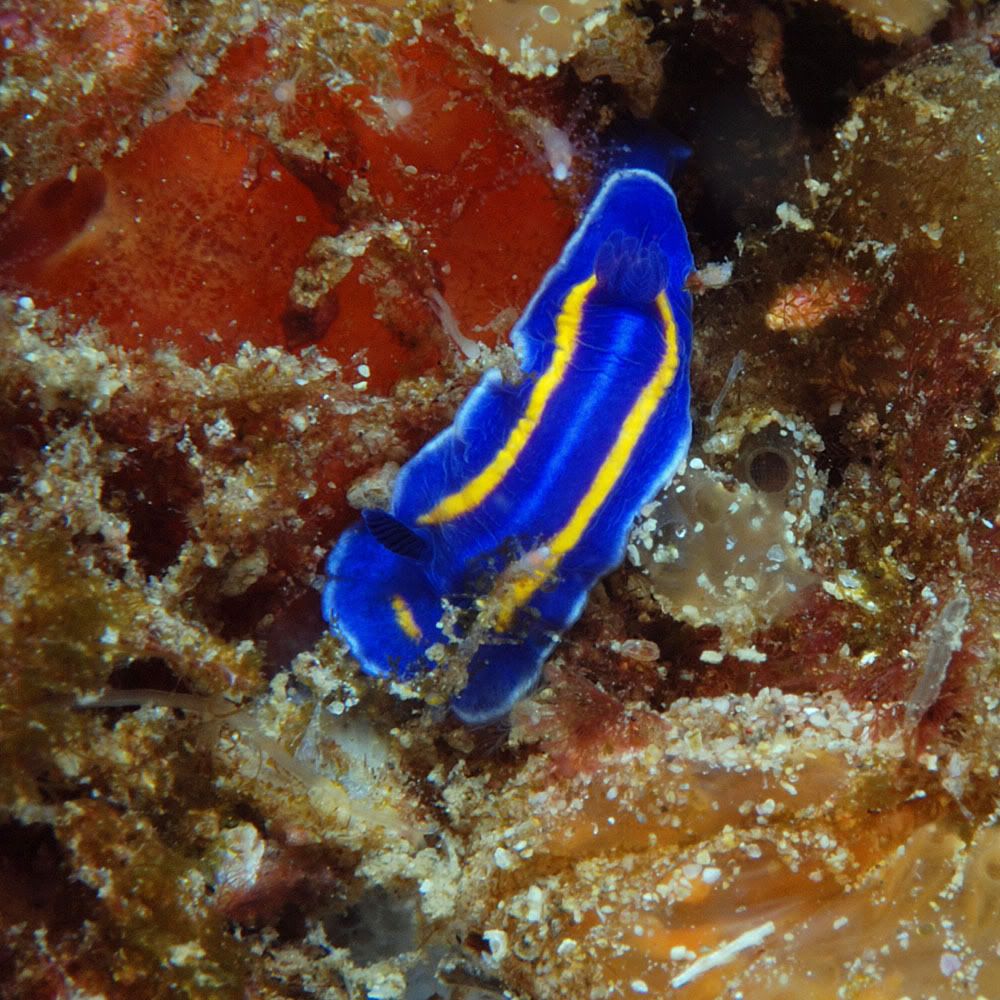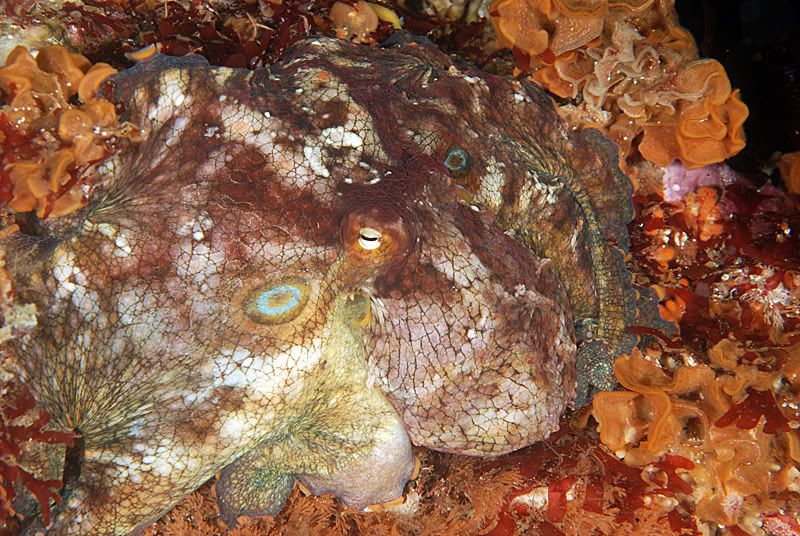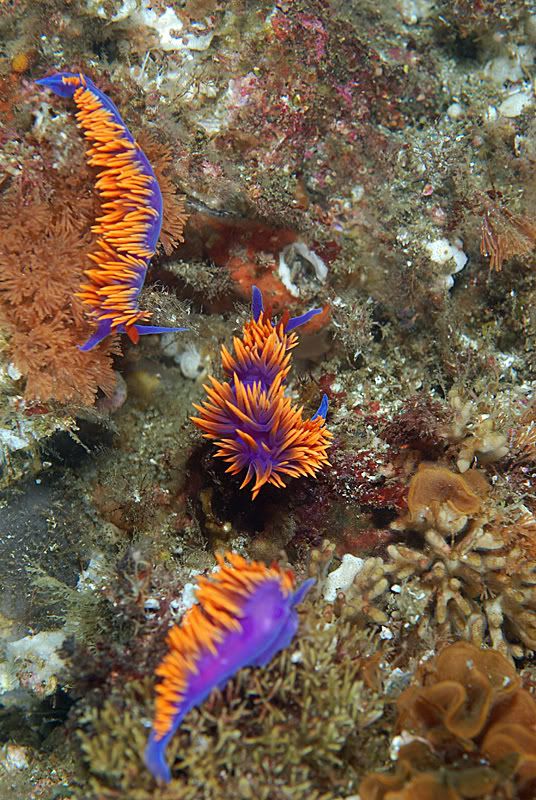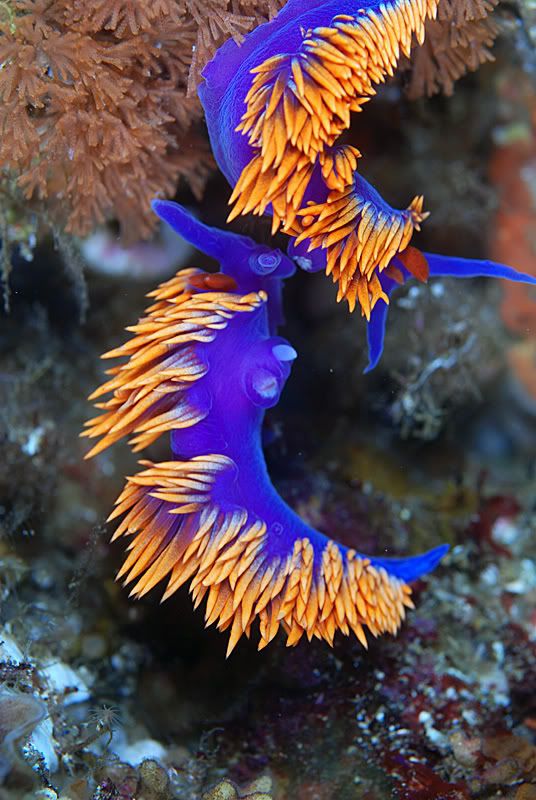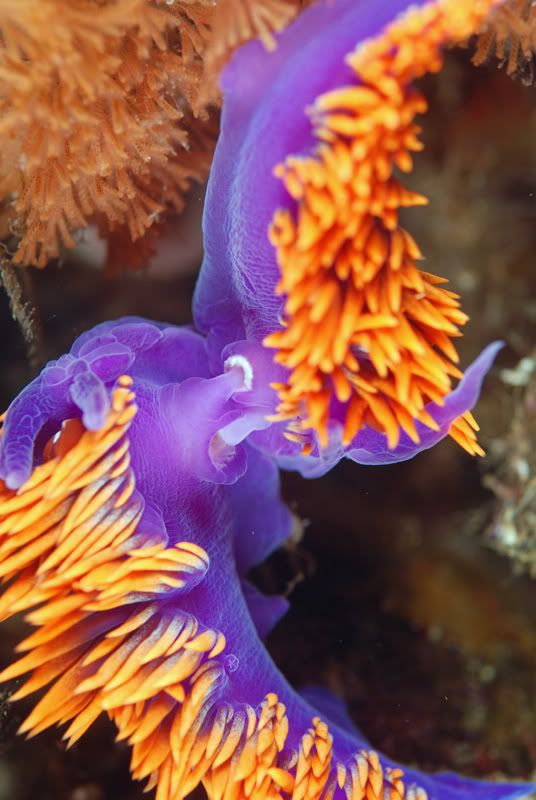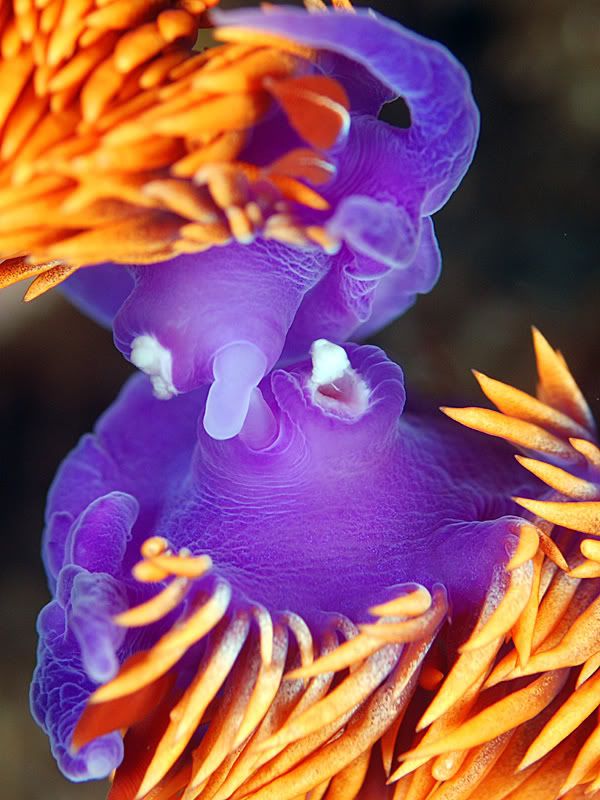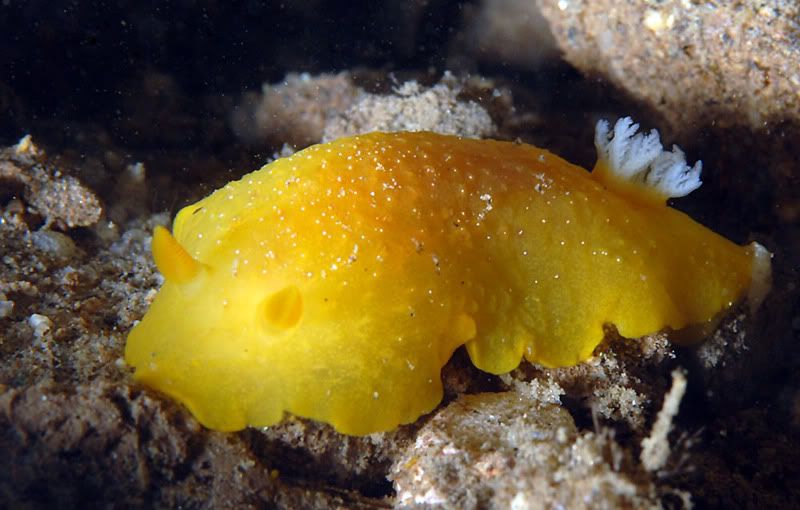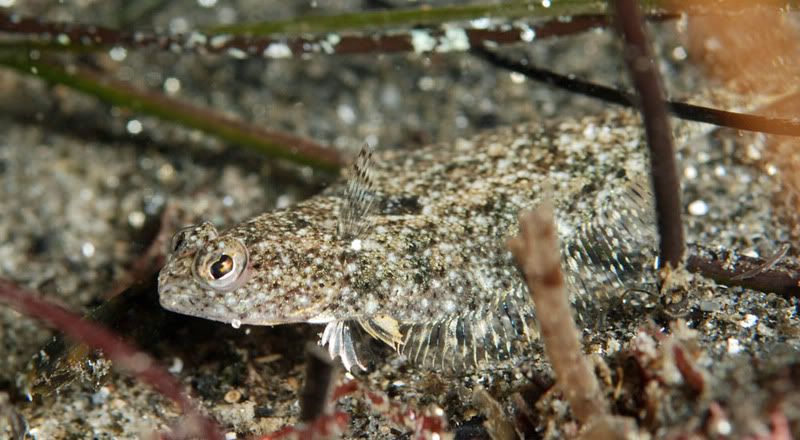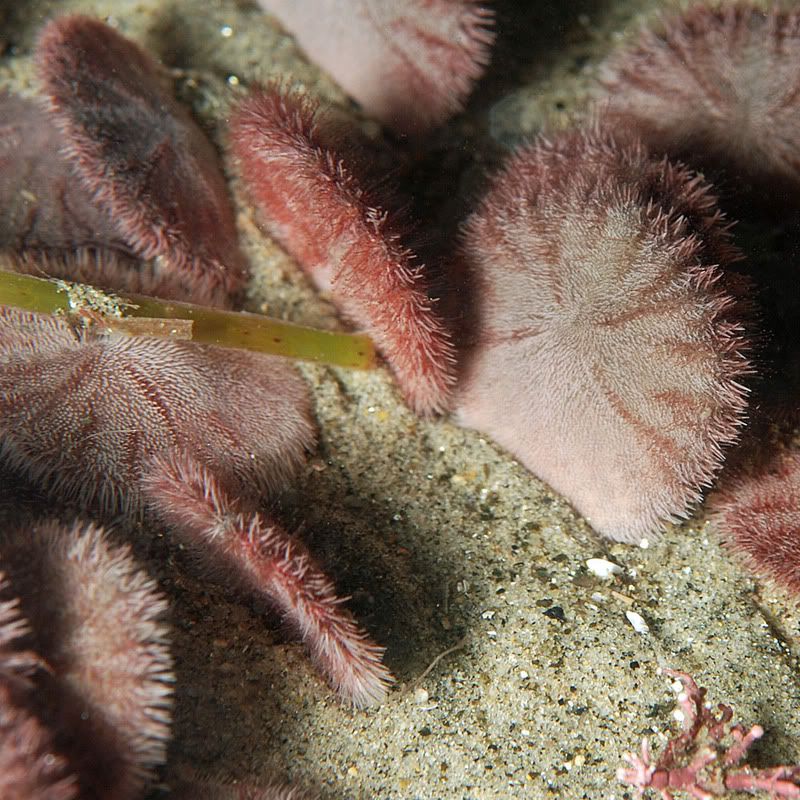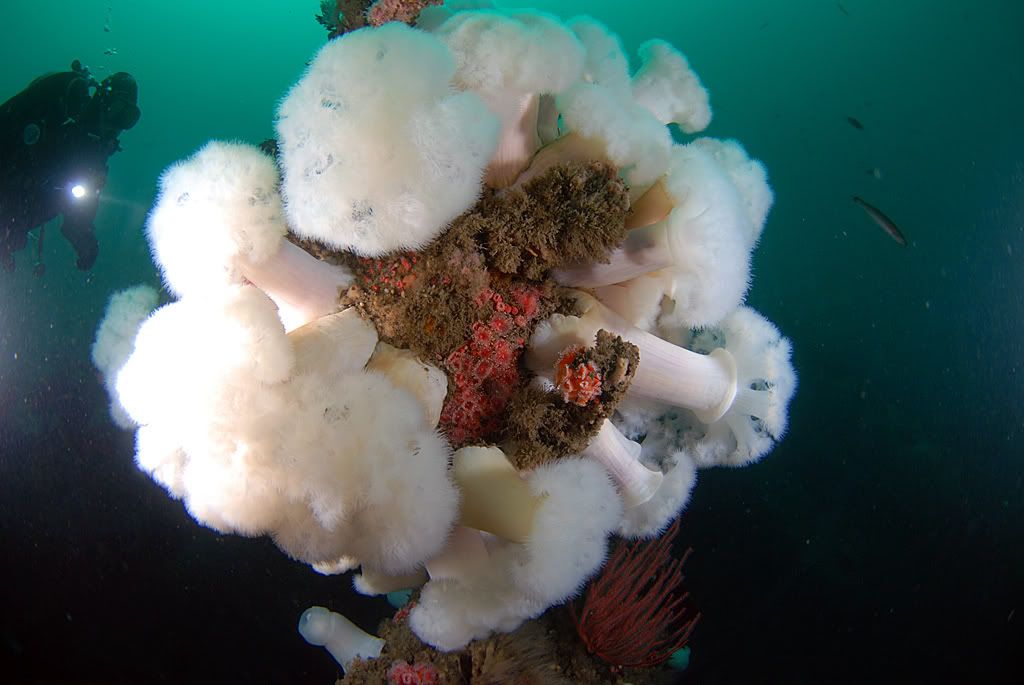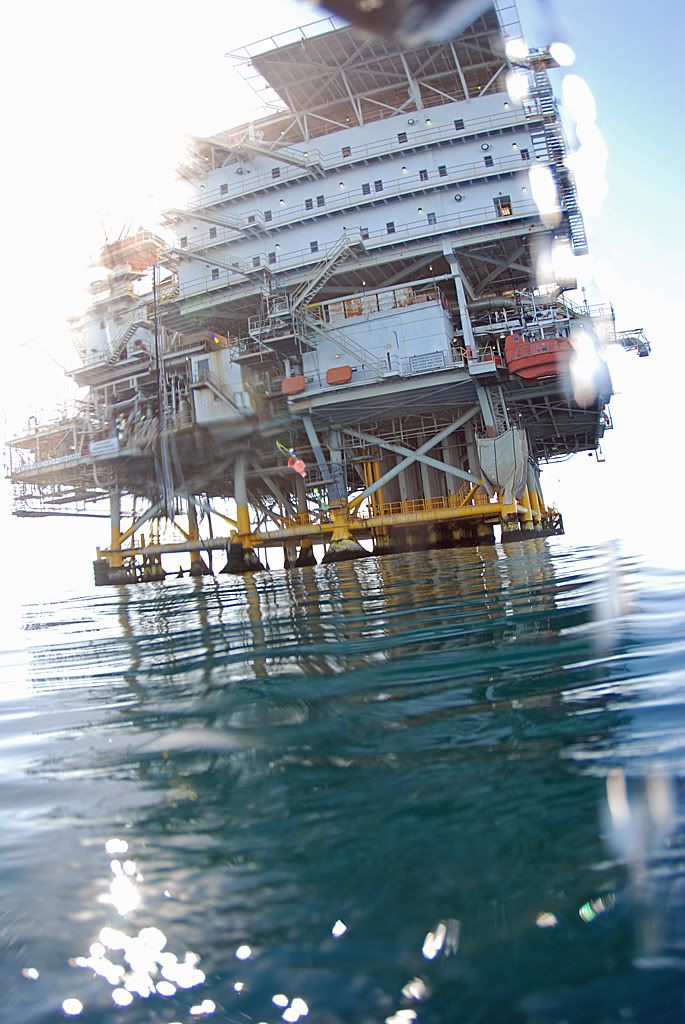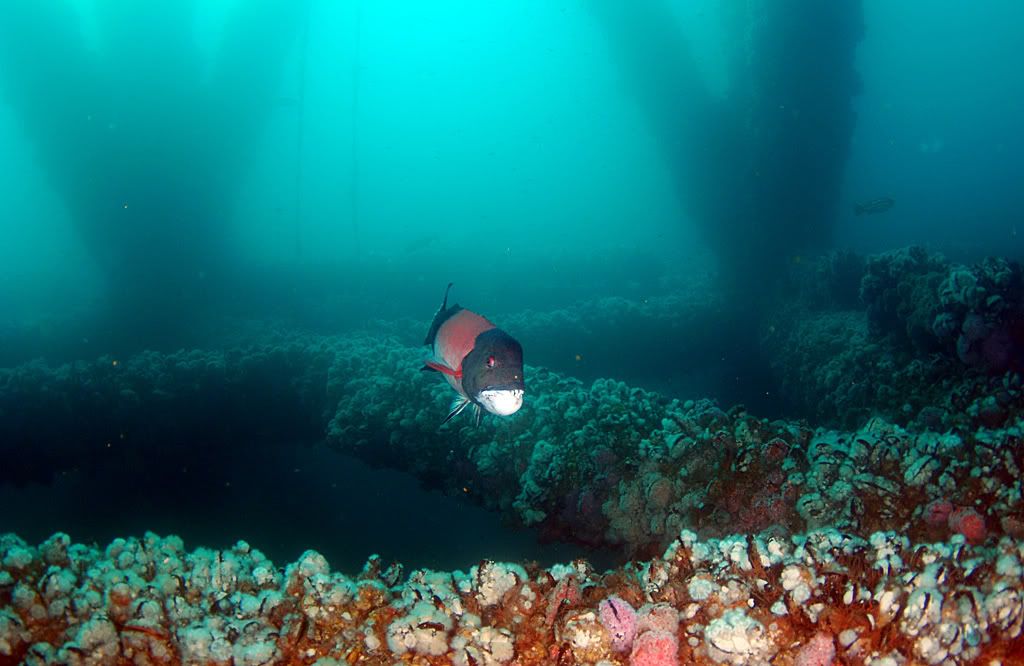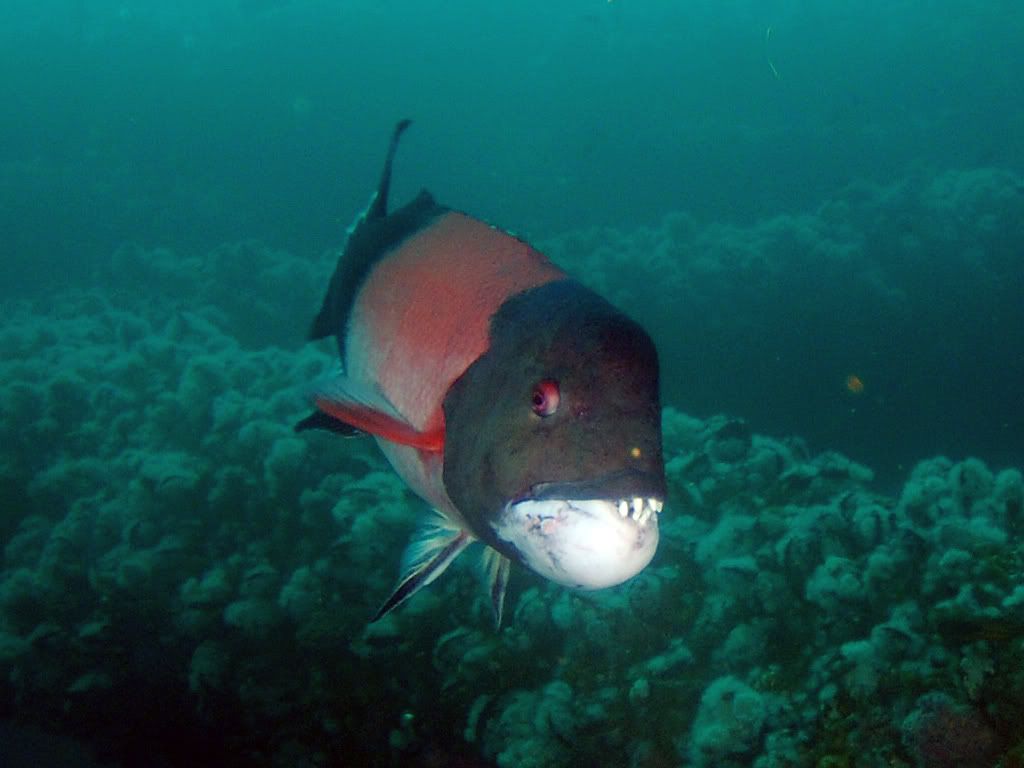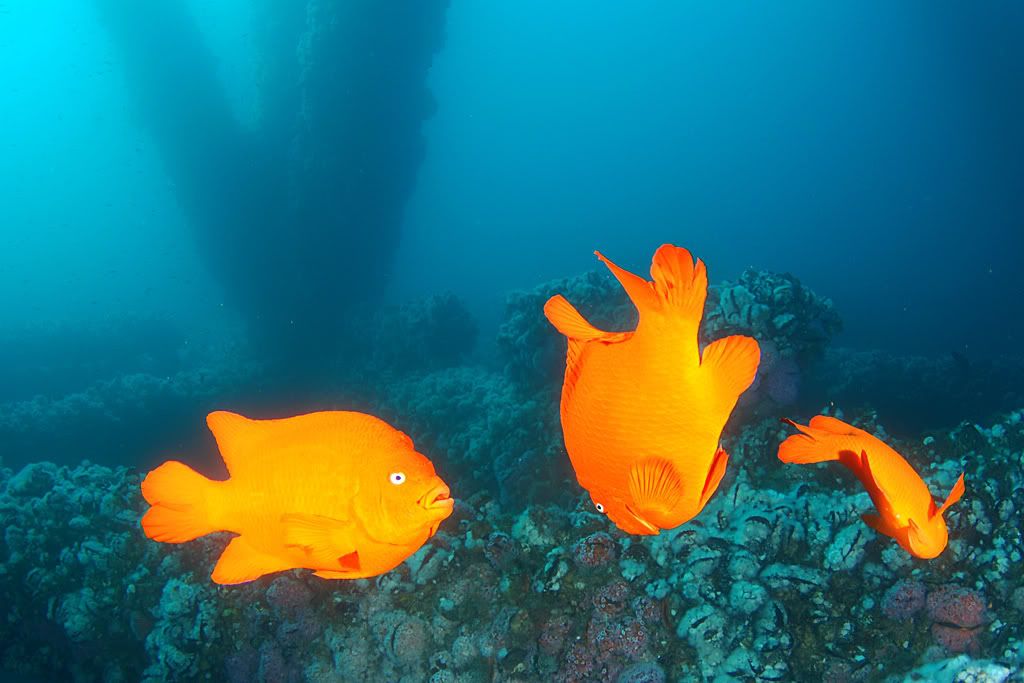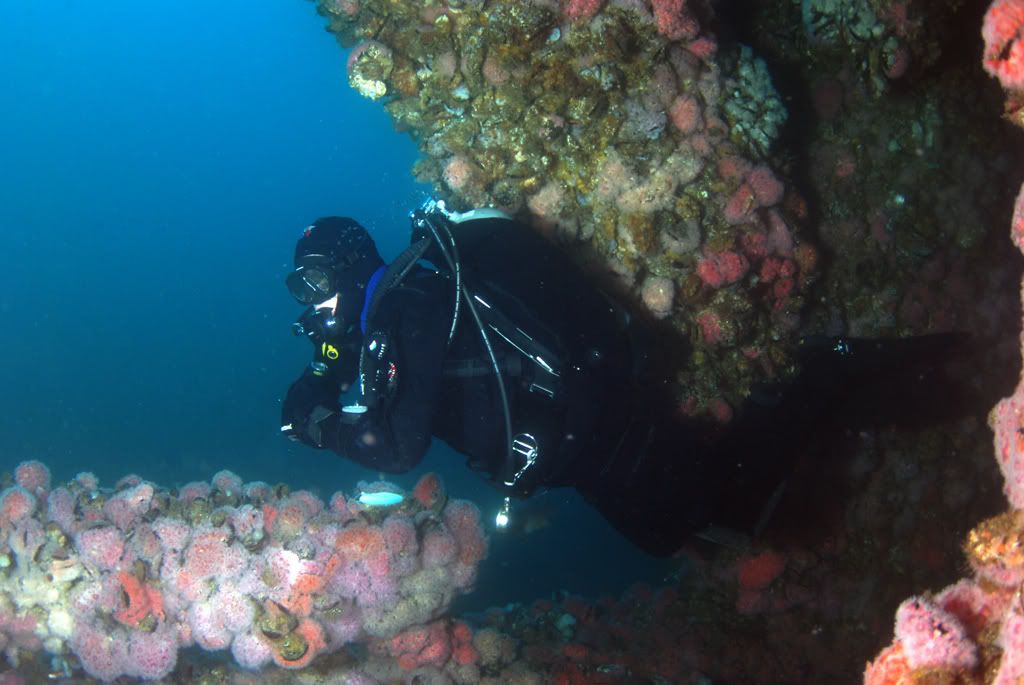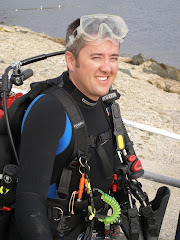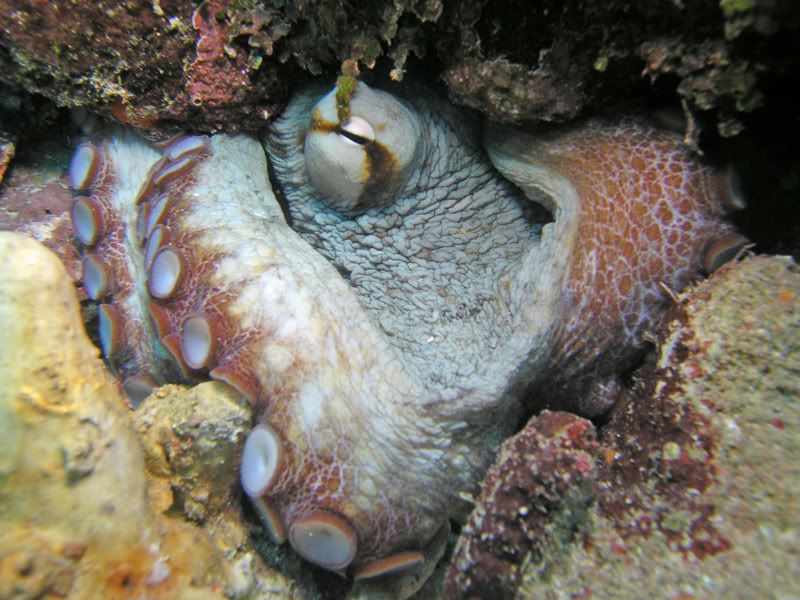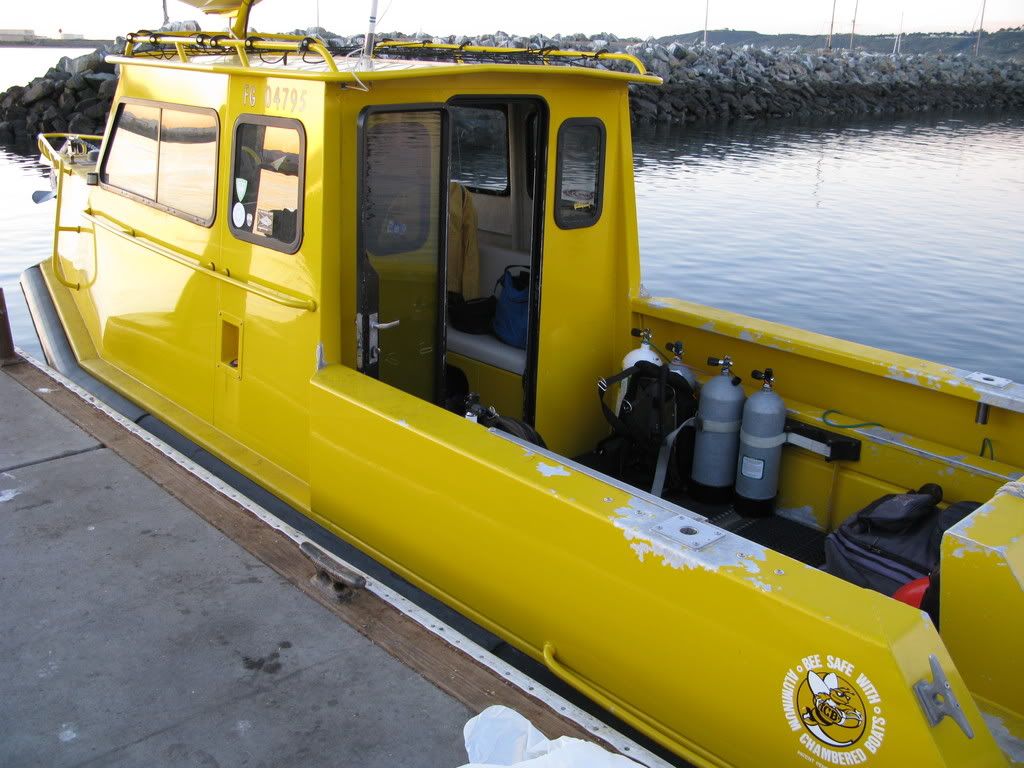
Our plan was to eventually reach the Coronado Islands in Mexican waters, but to take our time getting there. We checked out several floating kelp paddies along the way, but didn't find any pelagics or unusual critters. We came across three pods of California Grey Whales, two groups of white-sided dolphins, and a solo dolphin heading somewhere else very fast. None of them wanted to stay and play.
We finally got to South Coronado Island. I didn't know that there were pens holding farmed tunas.
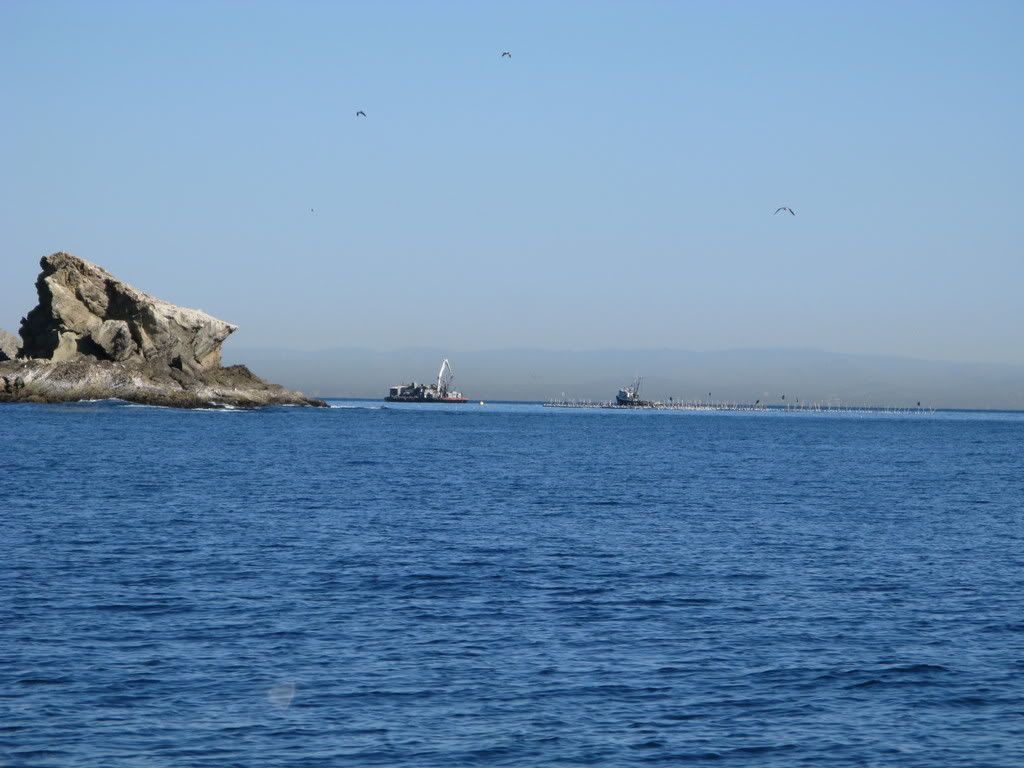
We dropped into the water south of the island, on top of a pinnacle at 55 feet of depth. The site was crazy with nudibranches. I easily spotted a dozen species in the first ten minutes. Here are a couple photos from that site.
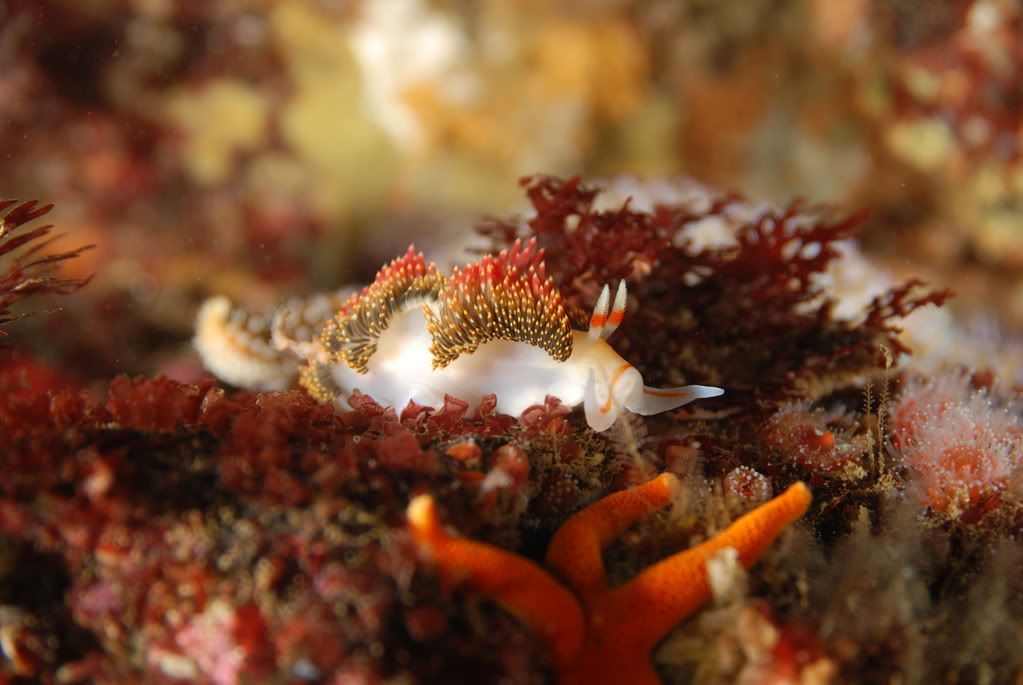
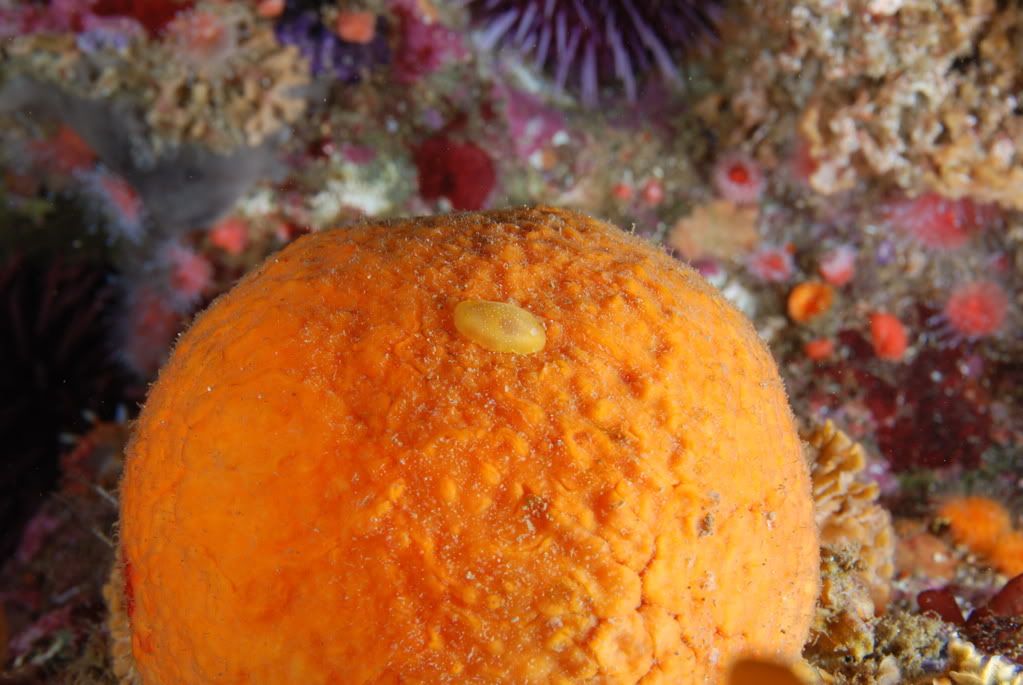
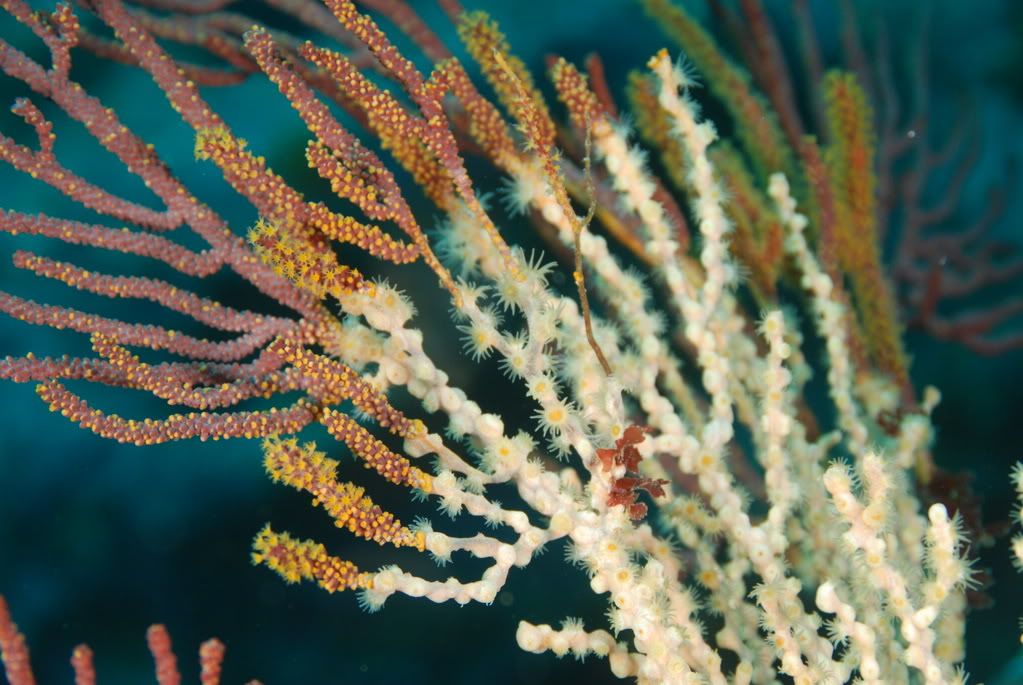
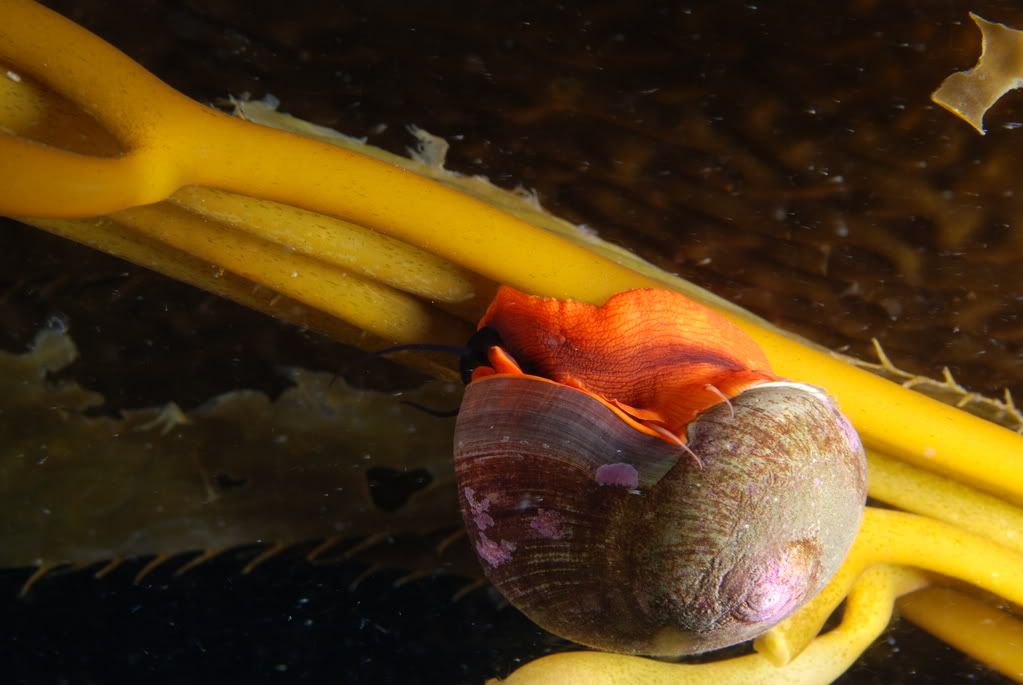
We then took the boat around to Middle Coronado Island. There is a particular beach on which you can usually find a colony of elephant seals. In the photo below, you can see the beach from where we had the boat anchored. We decided to see how close we could get to take photos of the seals. It was Roger's idea to swim underwater along the left side of the cove and crawl through the shallows to get near the beach. As we got into the water, I had a strange feeling that I guessed was a lot like the Crocodile Hunter might have had when somebody suggested that he grab a crocodile or touch that final stingray.

The approach worked well. Actually, the elephant seals didn't seem to mind us, although the female next to the big male was keeping a wary eye on us.
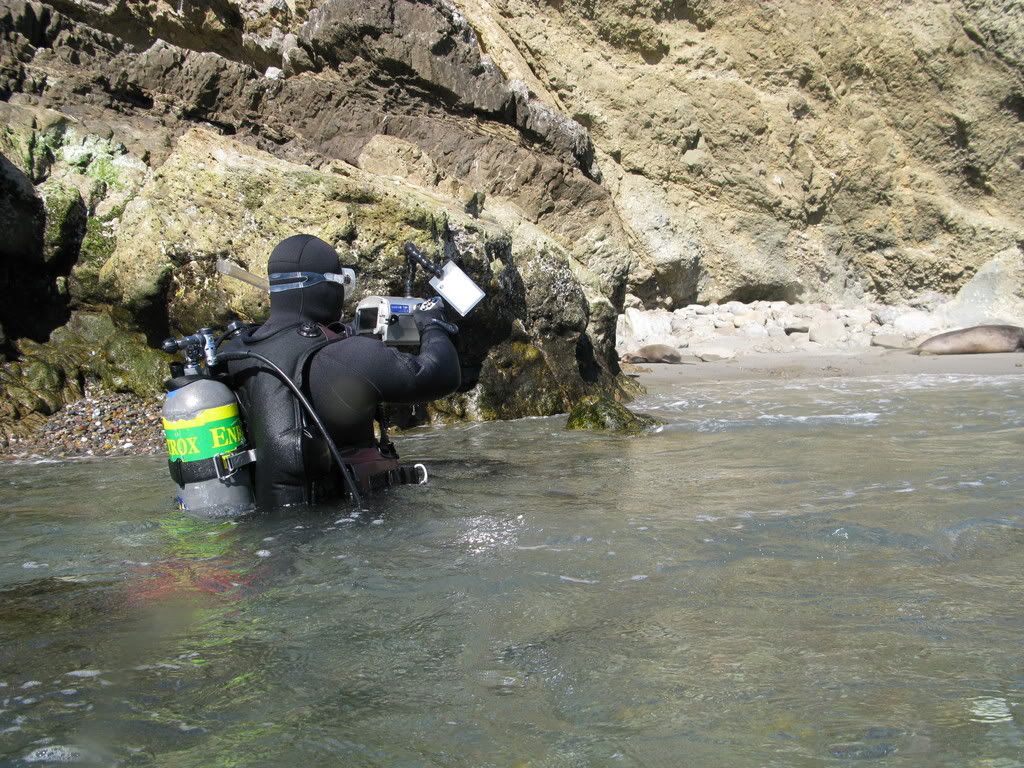
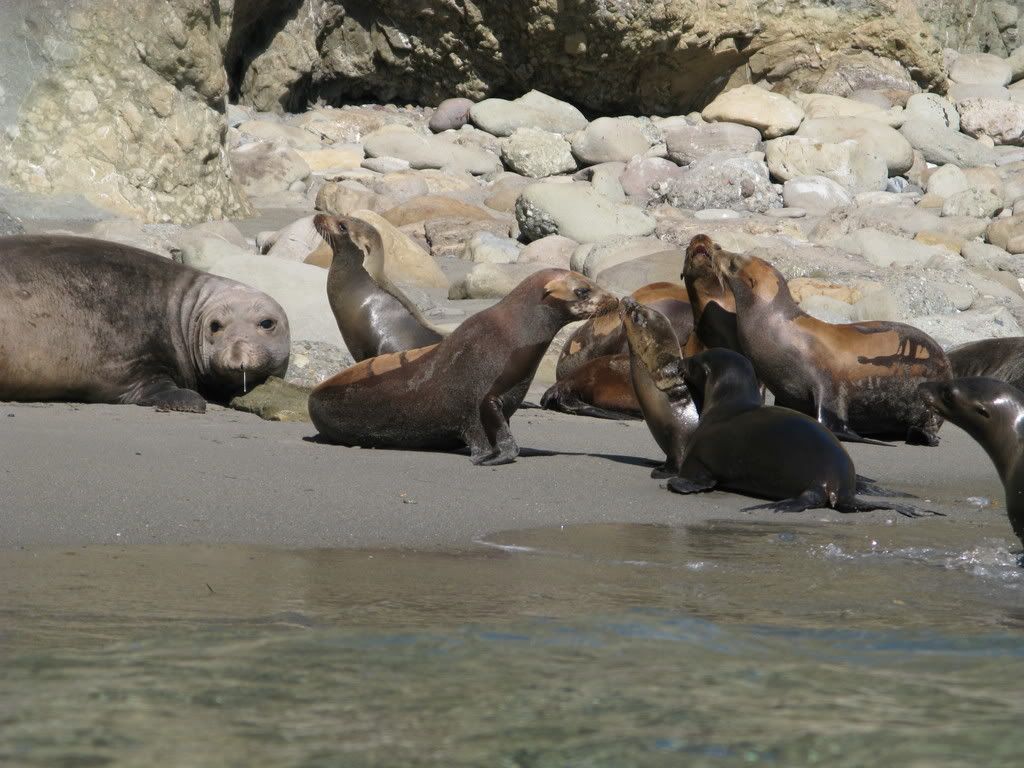
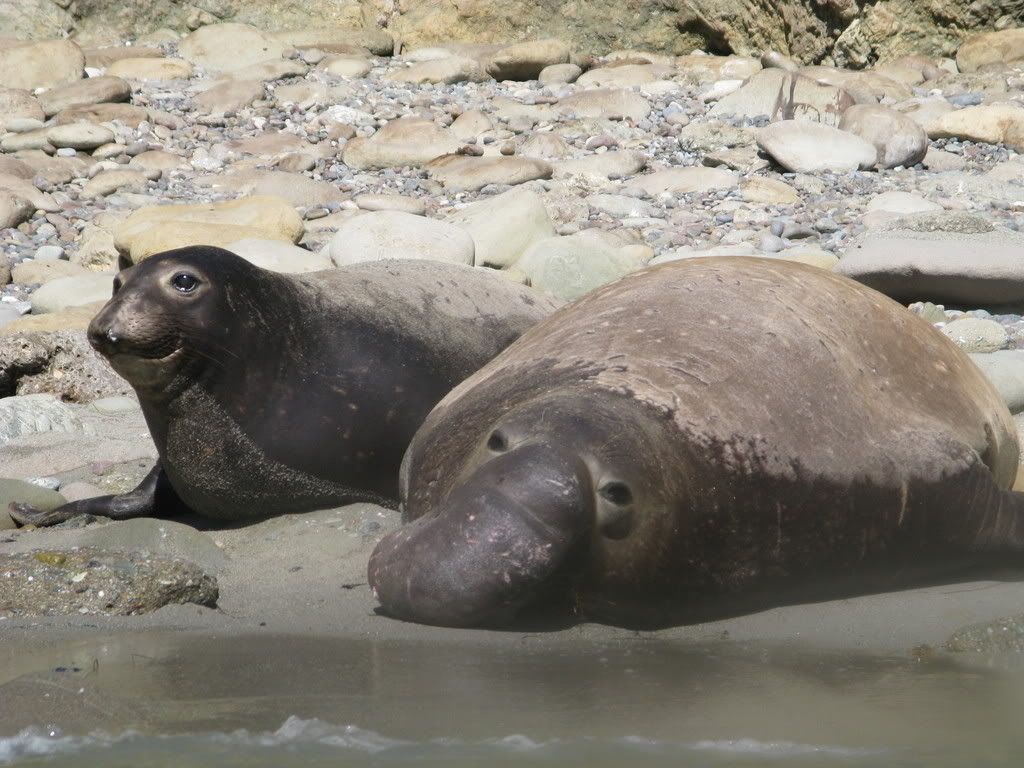
According to National Geographic, bull elephant seals can be 20 feet long and 8,800 pounds. I've seen bigger ones on television, but I bet this one weighed 6,000 pounds. Even though I was in mid-thigh deep water in front of him (and you can see that he is at the water's edge), he barely even opened an eye to see me. His girlfriend was keeping her wary eyes on us the whole time.
While we waited and hoped that the elephant seals would take a swim, we had a many sea lions to keep us company.
INSERT MOVIE HERE
After a bite to eat, we went up to the south end of North Coronado Island. This is the side less frequented by dive boats, away from known dive sites like Keyhole and Lobster Shack. Our boat captain, Danny, knew a location where rare Purple Hydrocoral could be found. Its deep, though, usually in the 80-120 foot range. We found our first piece at 50 feet and a large quantity around 100 feet deep. We also found a nice cabezon. The sea lions were around again to entertain us.
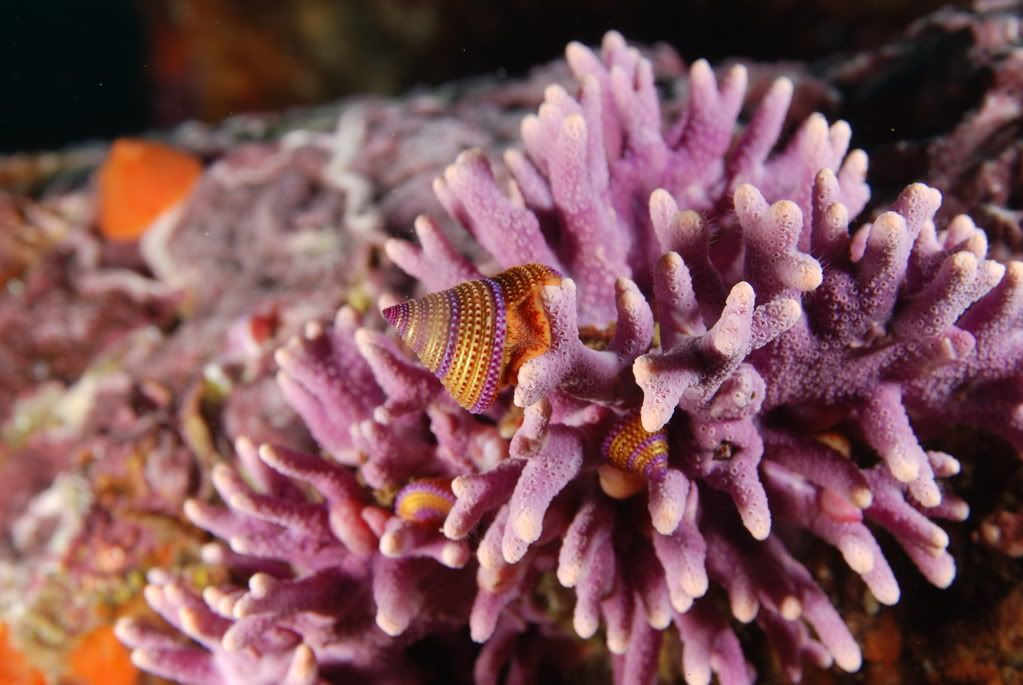

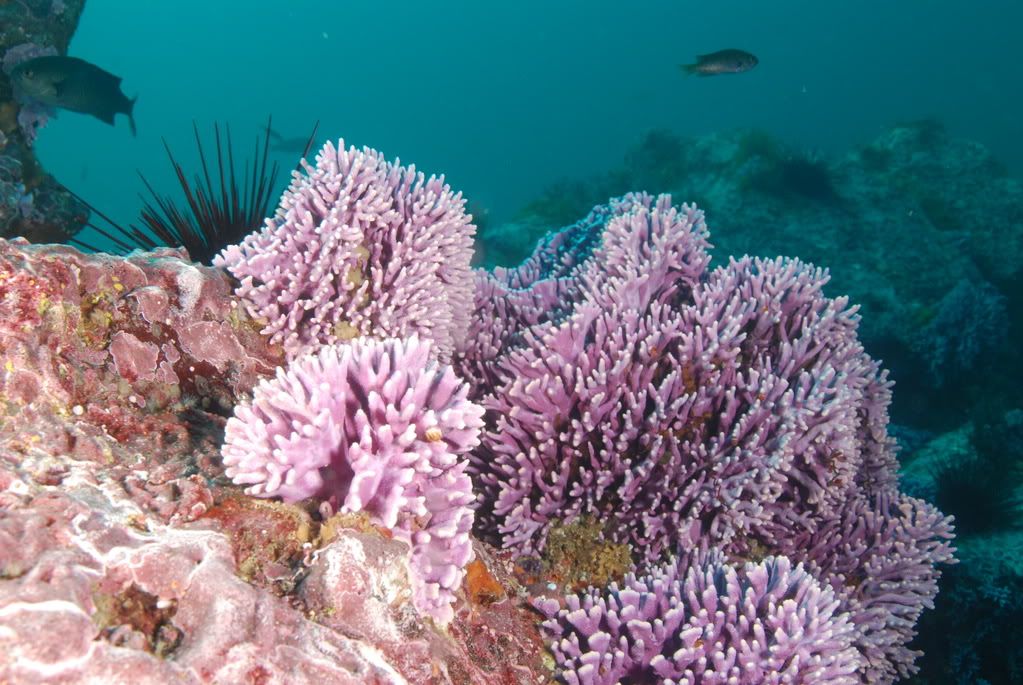
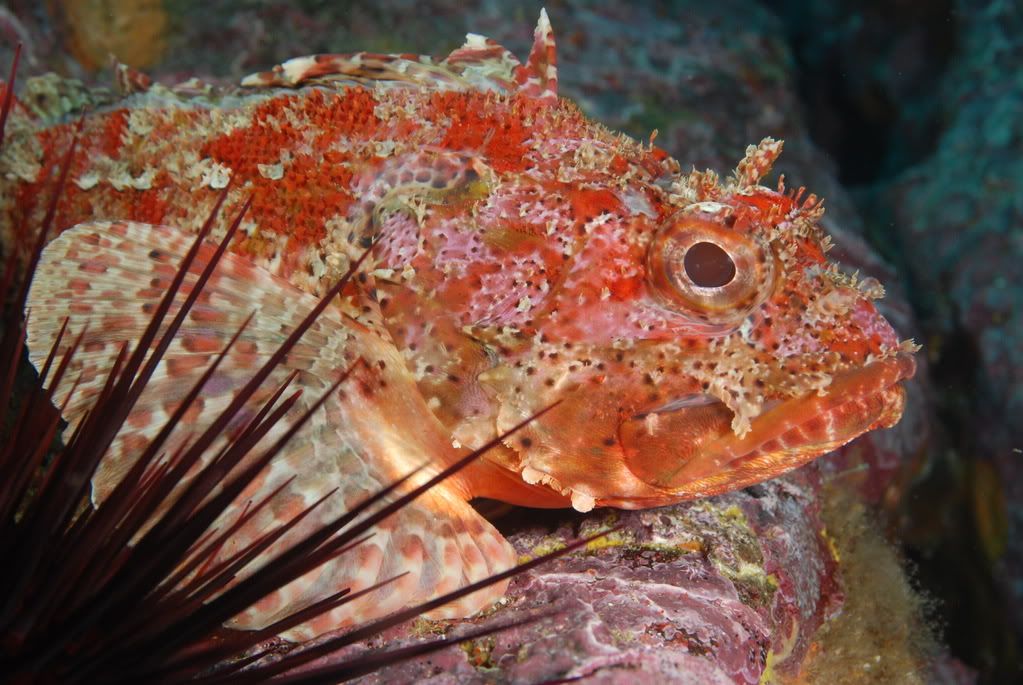
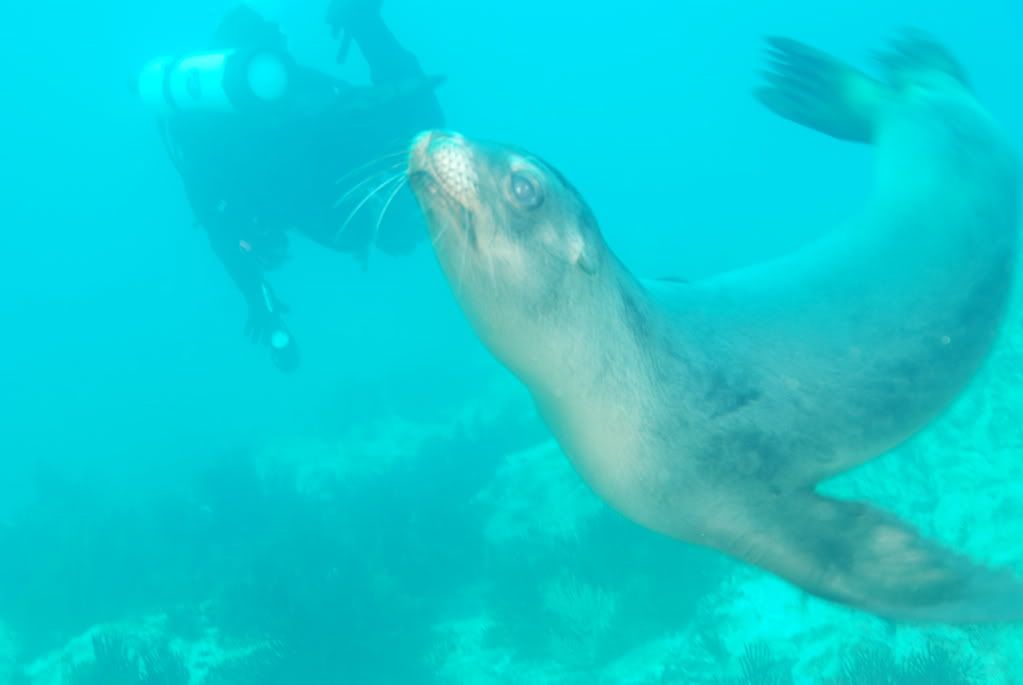
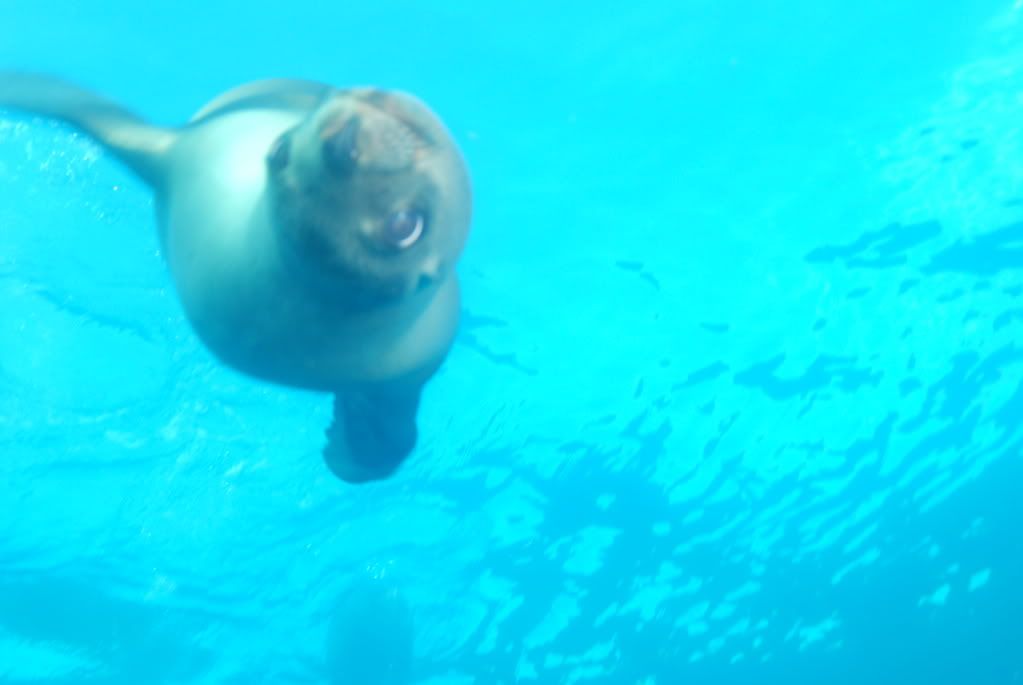
Last, here is my dive buddy and trip planner Roger Uzan. One of his videos can be found on YouTube. Be sure to watch it in HD.
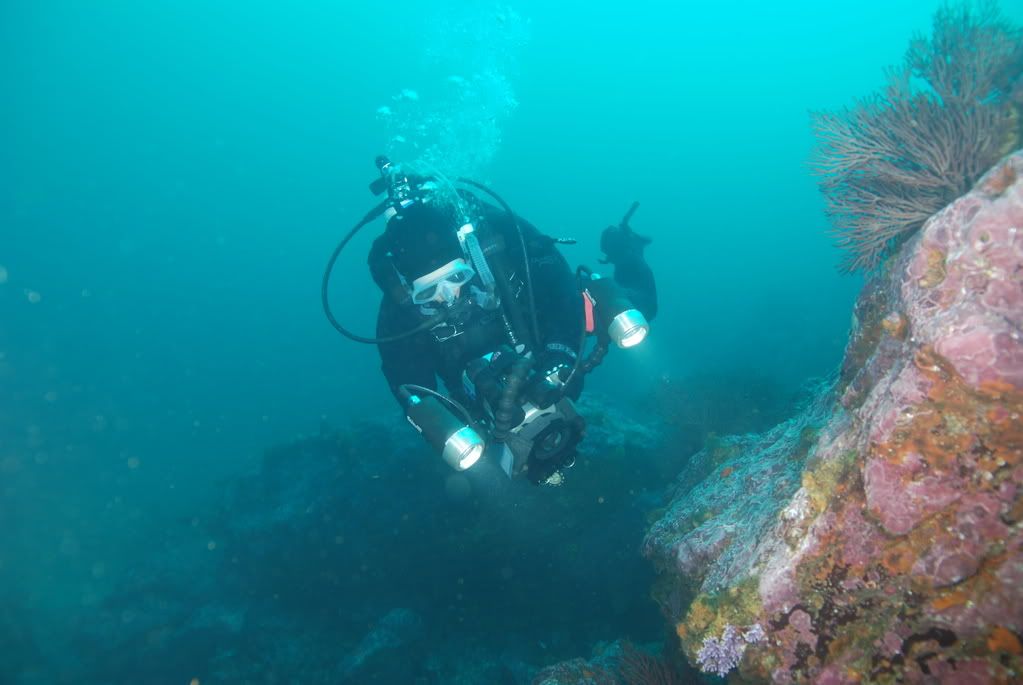
More of my photos can be found at my Photobucket Album and some of Roger's stills can be found at Roger's stills.
